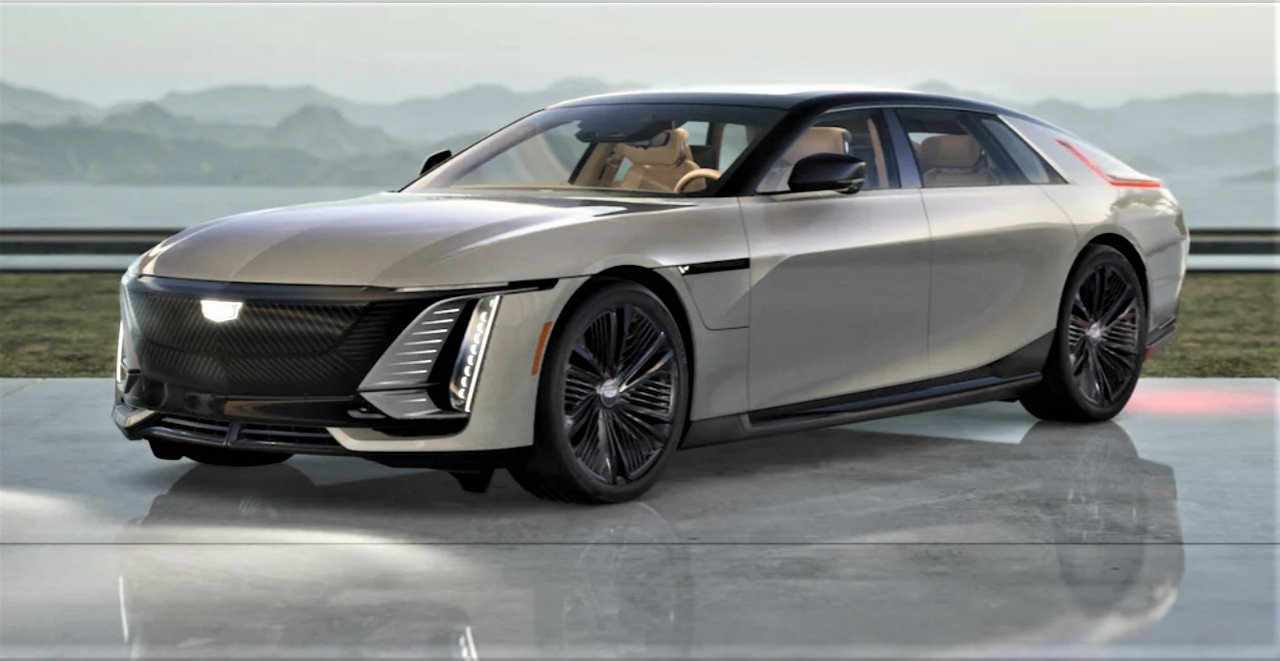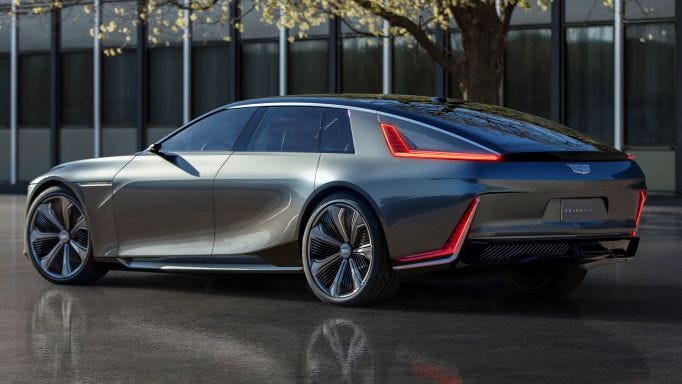Cadillac Celestiq a Manufacturing MasterpieceCadillac Celestiq a Manufacturing Masterpiece
What caught my eye is the business case built around the car, and how it’s manufactured.

Cadillac created a sensation when it unveiled its bespoke flagship sedan, the $300,000-plus Celestiq. The price dropped jaws. The styling kicked off a frenzy of critiques. And the sheer audacity of it sent shockwaves through the industry.
This is not a car that will go quietly into the night. Everyone who is into cars has something to say about it. But let’s set the price and the styling aside. What caught my eye is the business case built around the car, and how it’s manufactured.
Cadillac is not doing the Celestiq to drop billions to the bottom line, at least not directly. They’re only going to make about 400 of them a year, so I’d estimate it’s only going to generate about $140 million a year in revenue, and maybe $25 million in profits. Those are rounding errors for a corporation the size of General Motors.
No, the reason they went forward with this car is to rebuild Cadillac’s brand image. Despite a world-class lineup of vehicles, the Cadillac brand still doesn’t command the respect of luxury customers who own a Mercedes, BMW, or Audi. The Celestiq is tasked with changing their opinions. And if it works, it’s going to raise the sales and profitability of every other Cadillac in the lineup. So, the payoff could be significant.
The Celestiq is a car that will cater to the whims and tastes of high-wealth customers. They can order just about anything they want on the car, and Cadillac will assign a member of its design team to help them fulfill their fantasies. For the people who plunk down a reservation, it’s going to be a white-glove experience every step of the way.
That’s one reason why they’re only going to make about 400 of them a year, or fewer than two a day. Low volume like that will ensure that customers get a royal reception. But the other reason it’s a low-volume car is that GM is going to hand-build them. That not only adds to its prestige, it also allows GM to avoid a big tooling bill. GM only invested $81 million to make the car. Chump change.
Soft tools are part of the plan. Nothing new there. But additive manufacturing, or 3D printing, plays a key role. GM is going to print an impressive 115 different parts for the Celestiq. And not just dinky little plastic parts; it will make structural and trim pieces this way. The steering wheel bezel, for example, which surrounds the bottom half of the center of the wheel, is printed in metal.

Cadillac Celestiq rear 3.4
It’s easy to see why GM is printing so many parts. The more parts you print, the less tooling you need, and the lower the investment you need to make.
Another 300 parts will be fabricated at the assembly facility, which is in GM’s prototype shop located on its Tech Center campus in Warren, MI. Similar story to the printing. Fabricating parts only requires some simple jigs and fixtures, not hard tooling.
I also suspect GM cherry-picked the best shop workers it employs to make the car.
The Celestiq has an interesting skateboard design, made from large aluminum castings. GM calls them mega-castings, a nod to Tesla’s gigacastings, and they eliminate several hundred stampings.
The front-end module is made from two large wheelhouse castings, left-hand side and right. The same goes for the rear-end module: left- and right-hand wheelhouse castings. In between the front and rear modules is the floor, which is made from two large left-and-right castings, and which house the batteries for this giant electric sedan.
They all get welded together so the structure of the car is pretty much made from only six castings. While I thought Tesla had locked up the global capacity for the big molding machines needed to make castings this large, GM told me it’s making them in the Detroit area. They wouldn’t say by who or where, but they did tell me they’re using 3D printing to make the sand cores for the castings, which I think is pretty cool.

McElroy SQUARE_12
The doors are composite SMC and the rest of the body panels are carbon fiber. They’re using soft tooling to make those, too. Soft tools typically are good for 5,000 to 10,000 parts, so at 400 cars a year they’re not going to wear them out before someone at Cadillac decides it’s time for a styling change. GM says it’s also able to get creases and radii in the body panels that it couldn’t do in metal in high production.I’m impressed. I believe the Celestiq is one of the boldest moves Cadillac has ever taken in its 120-year history. I’m convinced enough high-wealth individuals will be attracted to buy something extremely rare that they helped craft. In time I think it will bring Cadillac’s image back to its historical standing as the “Standard Of The World.”
And all of this was made possible by the way the car is manufactured.
John McElroy (pictured, above left) is the President of Blue Sky Productions, which produces “Autoline Daily,” and “Autoline After Hours” on www.Autoline.tv and the Autoline Network on YouTube. The podcast “The Industry” is available on most podcast platforms.
About the Author
You May Also Like

